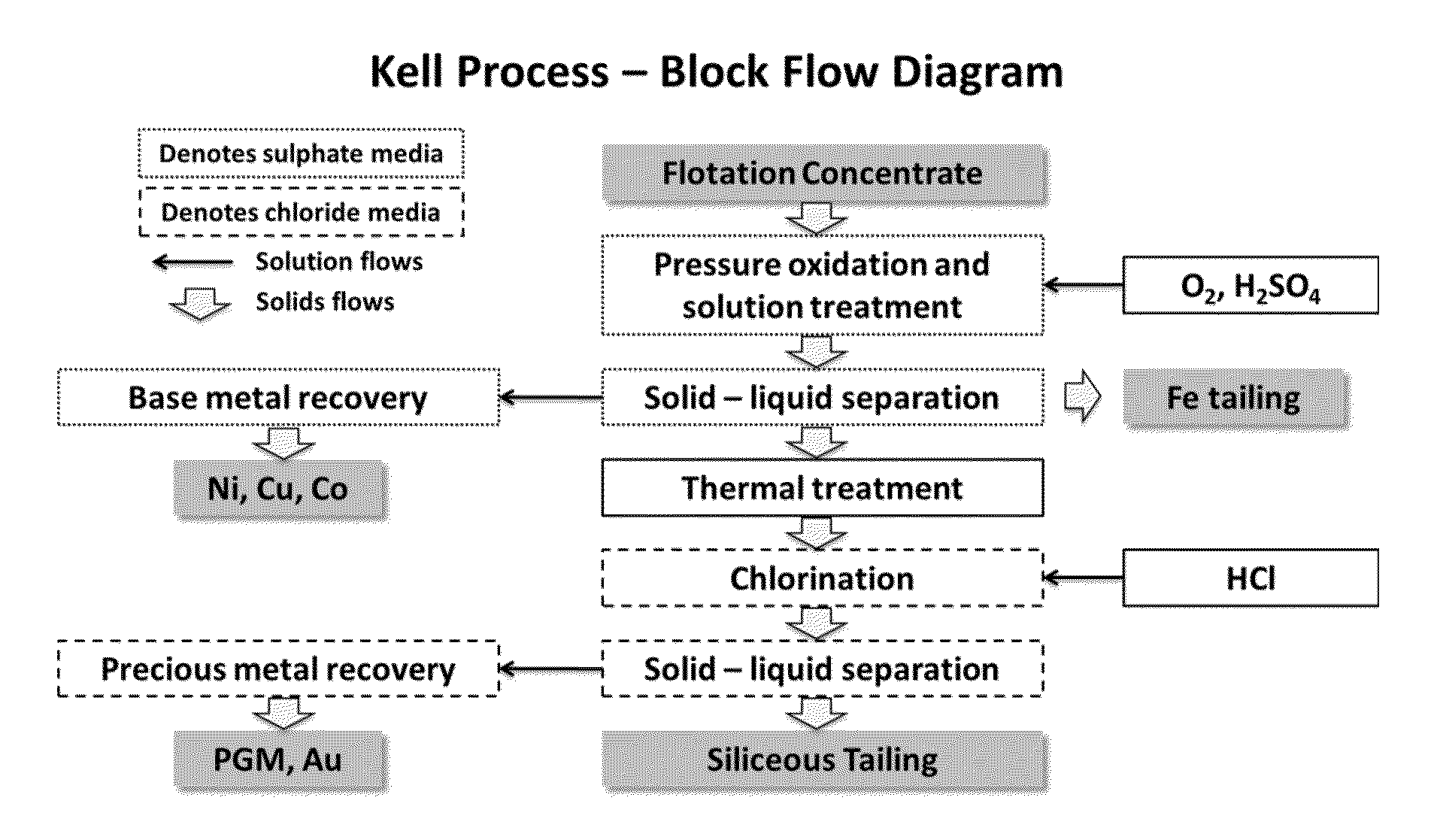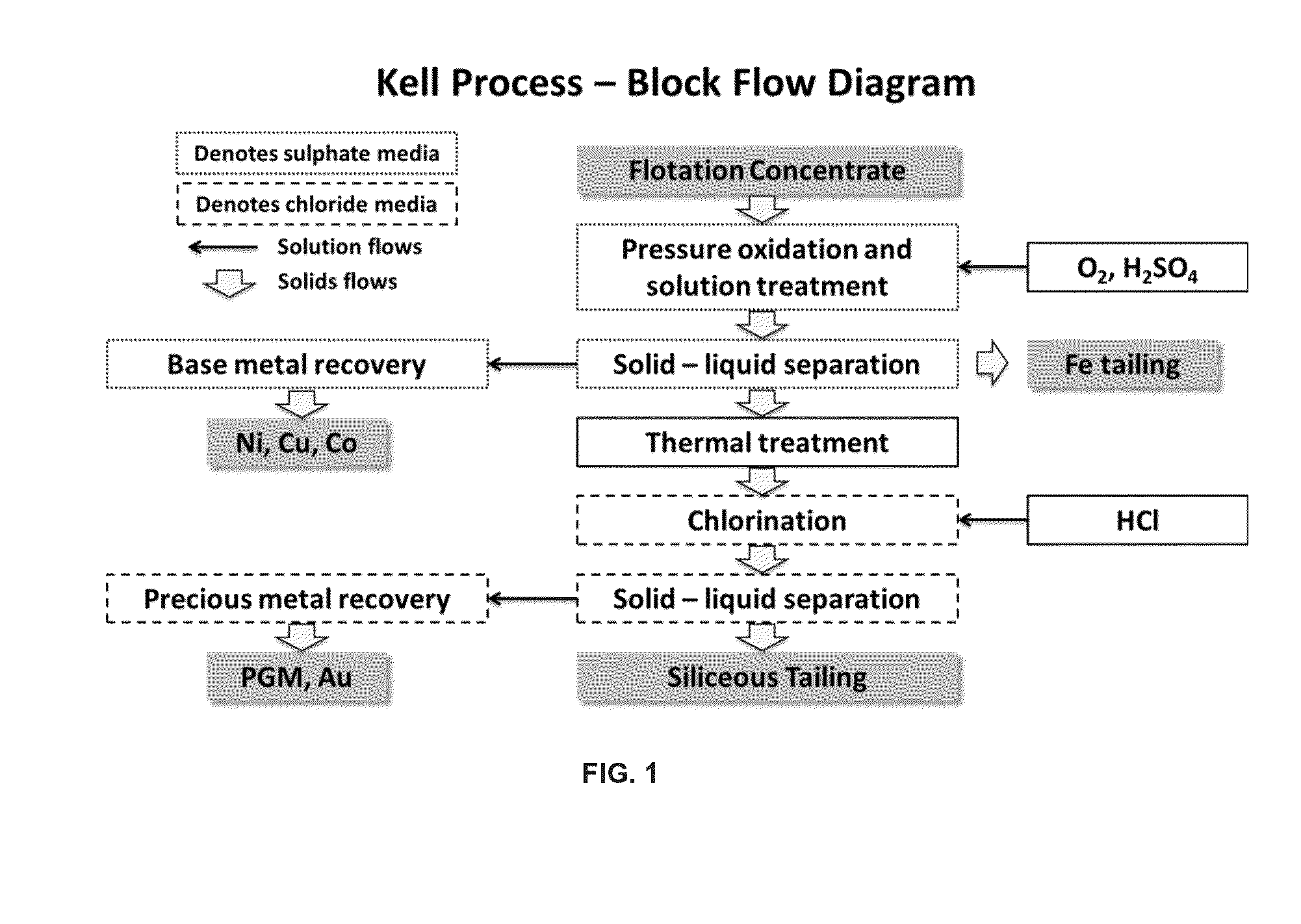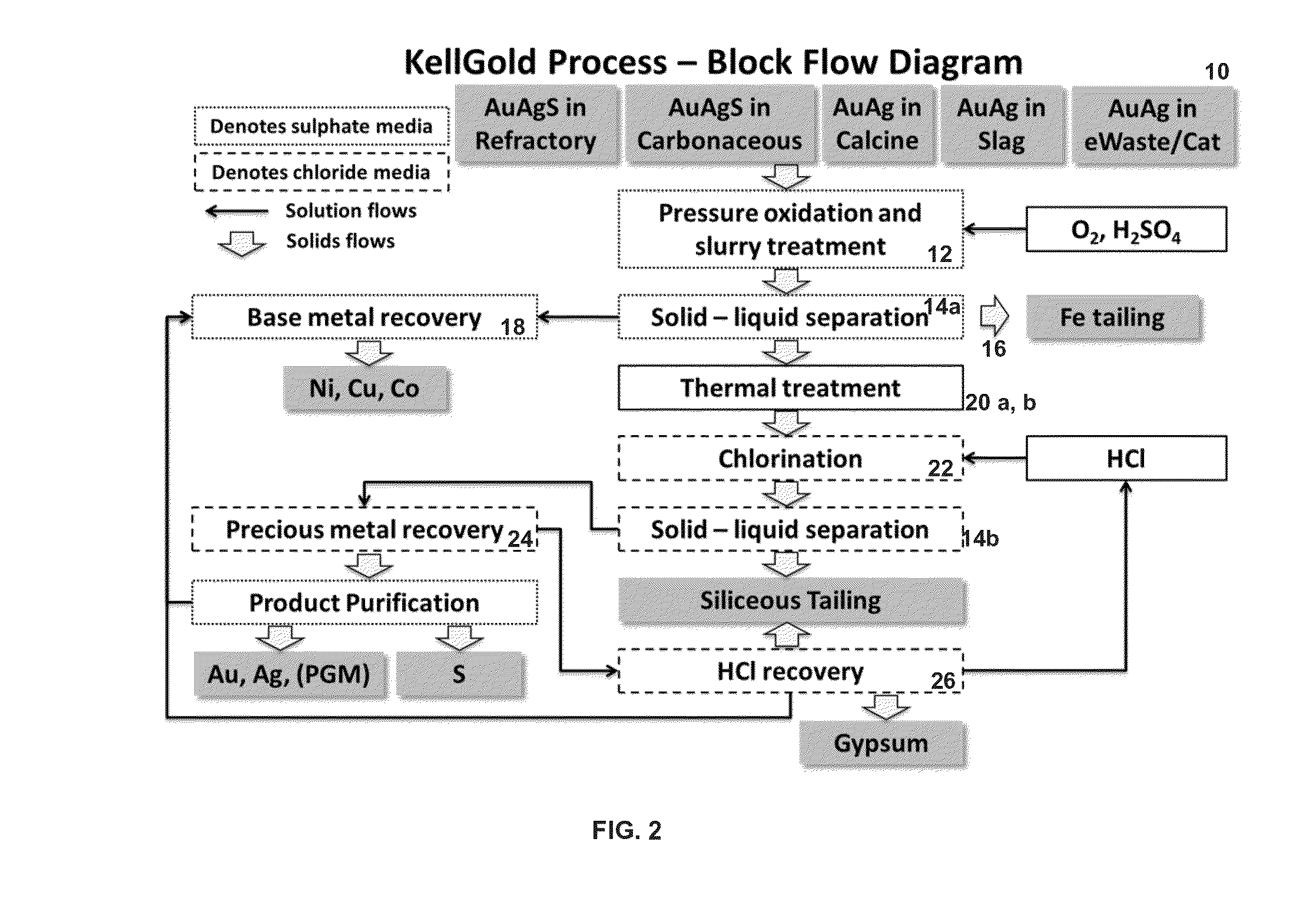Treatment process for extraction of precious, base and rare elements
a technology of precious, base and rare elements, applied in the direction of crystal growth process, inorganic chemistry, alkali metal halide purification, etc., can solve the problems of uneconomical or otherwise technically unsuitable treatment of conventional process routes such as cyanidation, material is not considered economically treatable, and use of cyanid
- Summary
- Abstract
- Description
- Claims
- Application Information
AI Technical Summary
Benefits of technology
Problems solved by technology
Method used
Image
Examples
example 1
Extraction of Precious and Base Metals from Various Feedstocks
[0178]In this example, seven samples of selected refractory gold-bearing concentrates and process products were obtained for testing, covering a range of precious metal grades, copper, sulfur and organic carbon contents as well as degree of refractoriness to conventional cyanidation leaching. The head assays are summarised in Table 1, while the chloride and cyanide extractabilities are summarised in Table 2.
TABLE 1Head Assays for Refractory CarbonaceousSulfide Ore, Concentrates and TailingsAssay (g / t)Assay (%)SampleAuAgAsCuSbSCCarbonaceous1.00.22,9808195.52.72.5Refractory OreRefractory132.522.64,6501,050113.025.01.3ConcentrateCalcine Leach4.811.03,950857107.02.20.1TailingsCalcine Leach2.611.61,2301,43068.02.20.1TailingsAmalgamation1.50.82,27013325.30.00.0TailingsRefractory21.250.988,0002,190717.028.71.4ConcentrateCu / Au67.654.5652170,00010.226.00.2Concentrate
[0179]Indicative percentage cyanide-extractable and chloride-extr...
example 2
Recovery of Precious and Base Metals from Refractory Gold Arsenopyrite Concentrate
[0181]In this example, a refractory gold arsenopyrite concentrate was studied, and the head assay is summarised in Table 3. Approximately 2 kg of blended concentrate with no further grinding or other pretreatment was charged into a 15 L autoclave and subjected to pressure oxidation with oxygen injection for 60 minutes. The pressure was then released using a flash letdown system with slurry subsequently maintained in a stirred tank thereafter prior to solid-liquid separation by pressure filtration. The filter cake was dried and split for analysis and a portion (˜0.5 kg) was slurried with a hydrochloric acid solution and subjected to chlorination in two stages with filtration between stages. The final residue was again subjected to chemical analysis to determine leach efficiencies of value elements. The KellGold recoveries are summarised in Table 4, showing recoveries in excess of 98% for Au, Ag and Cu. ...
example 3
Recovery of Precious and Base Metals from Refractory Gold Pyrite Concentrate
[0182]In this example, a refractory gold concentrate was studied, and the head assay is summarised in Table 5. Approximately 2 kg of blended concentrate with no further grinding or other pretreatment was charged into a 15 L autoclave and subjected to pressure oxidation with oxygen injection for 60 minutes. The pressure was then released using a flash letdown system with slurry subsequently maintained in a stirred tank thereafter prior to solid-liquid separation by pressure filtration. The filter cake was dried and split for analysis and a portion (˜0.5 kg) was slurried with a hydrochloric acid solution and subjected to chlorination in two stages with filtration between stages. The final residue was again subjected to chemical analysis to determine leach efficiencies of value elements. The KellGold recoveries are summarised in Table 6, showing recoveries in excess of 95% for Au, Ni, Cu and Co. The base metals...
PUM
| Property | Measurement | Unit |
|---|---|---|
| concentration | aaaaa | aaaaa |
| temperatures | aaaaa | aaaaa |
| temperatures | aaaaa | aaaaa |
Abstract
Description
Claims
Application Information
 Login to View More
Login to View More - R&D
- Intellectual Property
- Life Sciences
- Materials
- Tech Scout
- Unparalleled Data Quality
- Higher Quality Content
- 60% Fewer Hallucinations
Browse by: Latest US Patents, China's latest patents, Technical Efficacy Thesaurus, Application Domain, Technology Topic, Popular Technical Reports.
© 2025 PatSnap. All rights reserved.Legal|Privacy policy|Modern Slavery Act Transparency Statement|Sitemap|About US| Contact US: help@patsnap.com



